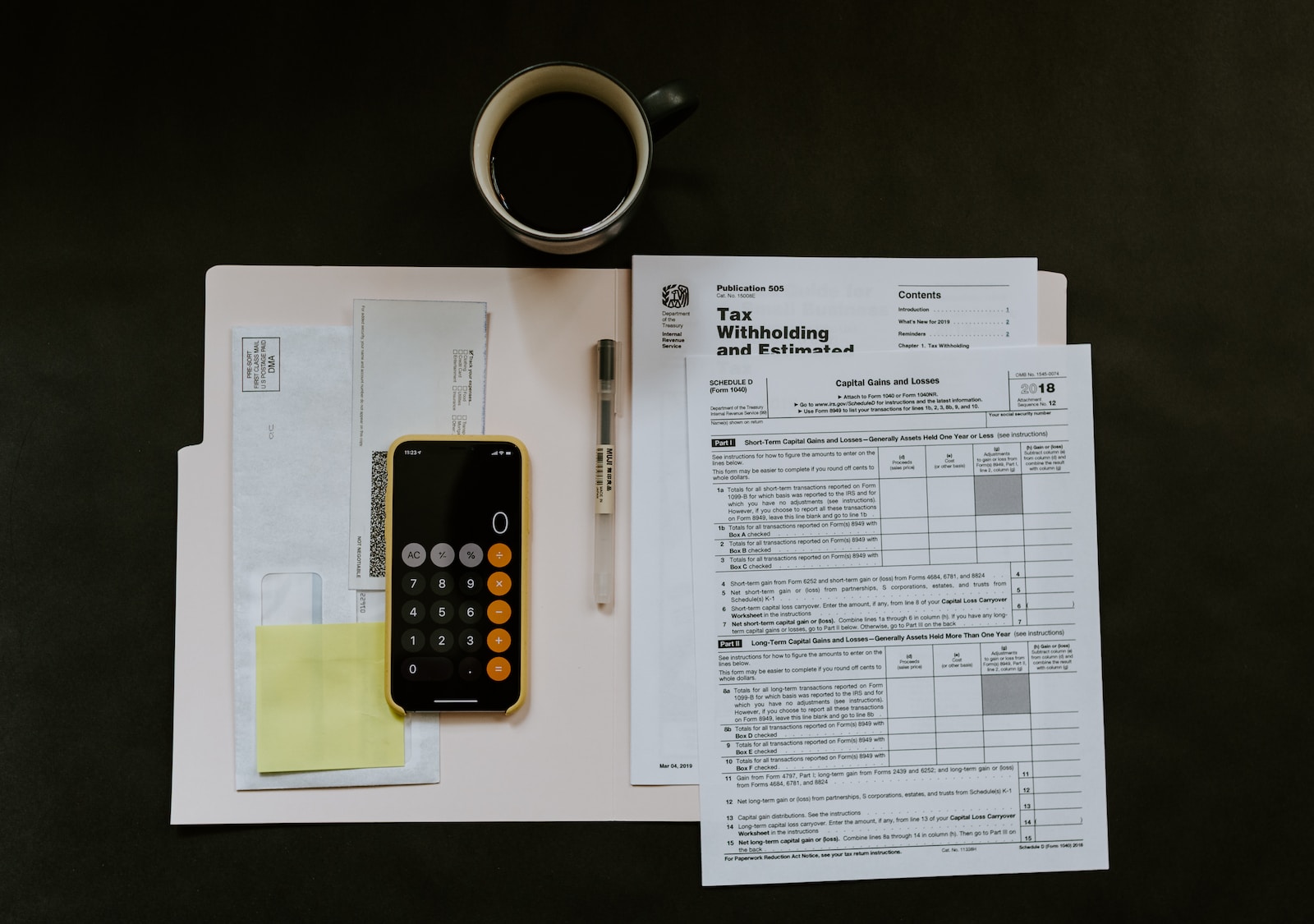Last Updated on: 22nd November 2023, 05:08 pm
Value-added tax, or VAT, is a consumption tax levied on goods and services throughout the United Kingdom. As a business owner operating in the UK, understanding the process of registering for VAT is essential to ensuring compliance with the country’s taxation laws. In this article, we will explore the steps required to register for VAT, as well as the importance of doing so in a timely manner.
Before delving into the registration process, it is crucial to determine if your business is required to register for VAT in the first place. Registration is mandatory for businesses with a taxable turnover exceeding the current VAT threshold, which is subject to change on an annual basis. Be sure to check the latest threshold value on the HM Revenue and Customs (HMRC) website. If your business does not meet this criterion, you may still choose to voluntarily register for VAT in order to reap the benefits of reclaiming VAT on purchases.
To register for VAT, businesses must first gather their company information, including details of their unique taxpayer reference and VAT-eligible transactions. They must then submit this information to HMRC, either via an online application or by post, in some cases. Once registered, businesses will receive a VAT registration certificate, confirming their assigned VAT number and the effective date of registration.
Understanding VAT
Value Added Tax (VAT) is a consumption tax levied on the sale of goods and services in the United Kingdom. It is a tax collected at different stages of the production and distribution process, ultimately paid for by the end consumer.
VAT applies to various products and services, including transactions between businesses (B2B) and sales to customers (B2C). It is mandatory for businesses with taxable turnover exceeding the VAT registration threshold to register and charge VAT on their goods and services. The current threshold is £85,000.
There are three main rates of VAT:
- Standard rate: 20% – applied to most goods and services
- Reduced rate: 5% – charged on certain goods and services, such as domestic heating fuel and children’s car seats
- Zero rate: 0% – applicable to certain essential items, like food and children’s clothing
Some goods and services are exempt from VAT or are outside the scope of the tax, such as financial services and certain healthcare services.
To determine whether your business must register for VAT, consider the following steps:
- Calculate your taxable turnover: Evaluate the total income you receive from selling goods and services subject to VAT. This includes standard, reduced, and zero-rated items, but not exempt goods or items outside the scope of VAT.
- Check the VAT registration threshold: Compare your taxable turnover with the current VAT registration threshold (£85,000). If your turnover exceeds this amount in a 12-month period, you must register for VAT.
- Determine the applicable VAT rates and schemes: Based on your goods and services, determine the correct VAT rates to apply. You may also benefit from joining one of the special VAT schemes, such as the Flat Rate Scheme, designed to simplify VAT accounting for small businesses.
- Register for VAT: Once you have determined your eligibility, begin the VAT registration process. You can do this online via the HM Revenue & Customs (HMRC) website.
Determining Eligibility
Threshold and Taxable Supplies
To determine if a business is eligible for VAT registration, the first factor to consider is the VAT threshold. In the UK, the current VAT threshold is £85,000. This means that if a business has taxable supplies (goods and services) exceeding £85,000 in a 12-month period, it is required to register for VAT. Taxable supplies include:
- Sales of goods and services
- Bartering, exchanging, or part-exchanging goods
- Charging a fee for goods or services
However, if a business has a turnover below £85,000, it can voluntarily register for VAT.
Exemptions
Some goods and services are exempt from VAT, and businesses dealing exclusively with these products do not need to register. Examples of exempt goods and services are:
- Education and training
- Health services provided by registered health professionals
- Insurance and financial services
It is essential to identify whether your specific goods or services are exempt or not before proceeding with registration.
Businesses in EU Countries and Northern Ireland
For businesses in EU countries or Northern Ireland, different rules may apply. If the business is based in an EU country (other than the UK) but sells goods or services to customers in the UK, it may still need to register for VAT under the distance selling rules. The current distance selling threshold is £70,000.
Additionally, businesses in Northern Ireland have specific rules regarding trading with EU countries. If the business exceeds the relevant threshold, it may need to register for VAT in the specific EU country it is trading with. This can be a complex process, and guidance should be sought from local tax authorities.
Remember to consider all of these factors to determine your business’s VAT registration eligibility accurately.
VAT Registration Process
Online Registration
The VAT registration process can be done online, which is the most popular and convenient method for businesses. To register for VAT online, you can use the Government Gateway website. This requires a user ID and password, which can be obtained by signing up on the site. Once you have your login information, you can access your VAT online account.
You should have the necessary information about your business ready when filling out the registration form. This includes your business’s name, address, contact details, and more. It’s also essential to provide your financial information, such as your turnover and taxable supplies.
If you are using an agent to help you with the registration process, ensure they have the required user ID and password to access your VAT online account. This will allow them to submit the VAT1 form on your behalf.
Post and Contract Registration
Although online registration is the preferred method, businesses can also register for VAT through post and contract registration. To do this, you’ll need to obtain a VAT1 form, fill it out with the necessary information, and then mail the completed form to the appropriate address. This method typically takes longer than registering online, as there may be delays in processing the postal application.
In some cases, businesses may choose to register for VAT through a contract registration. This involves directly working with a VAT registration agent to complete the process on your behalf. This is especially helpful for businesses that may not be comfortable navigating the online registration process or require more extensive assistance.
In conclusion, the VAT registration process can be completed through either online registration, post, and contract registration. No matter the method, businesses should ensure they have all the required information ready before starting the process, such as their financial details and business records. Registering for VAT can be essential for various businesses, and because it’s easily accessible online, this is the most recommended method.
Key Information and Documentation
VAT Number
A VAT number is a unique identifier issued by HM Revenue and Customs (HMRC) to businesses registered for VAT. To obtain a VAT number, businesses must complete the VAT registration process. This typically involves providing the following information:
- Business name and address
- Company registration number
- Date of first taxable supply
- Estimated taxable sales figure for a 12-month period
Invoices and Suppliers
When registered for VAT, businesses must account for VAT on their sales invoices. This involves charging VAT to customers and reclaiming it on purchases. To properly document VAT transactions, businesses need to maintain complete and accurate records, including:
- Sales and purchase invoices
- Supplier information and VAT numbers
- Records of VAT returns and payments made
Office and State Revenue
Upon registering for VAT, businesses will be assigned to a tax office based on their location. This office will handle the company’s VAT payments and returns. Businesses should be aware of the following aspects:
- Due dates and deadlines for VAT returns and payments
- Late payment penalties and surcharges
- Methods of payment, such as direct debit or online banking
HMRC and VAT Returns
VAT returns are mandatory quarterly reports filed with HMRC, showing the business’s VAT liabilities, input tax claims, and any adjustments made during the accounting period. To submit a VAT return, businesses should provide the following information:
- Total sales and purchases during the accounting period
- Amount of VAT owed on sales
- Amount of VAT reclaimable on purchases
- Net VAT payable or reclaimable for the accounting period
Submitting VAT returns can be done online using the Government Gateway account through the HMRC website.
Also if you aren’t actually registered as a business you might be interested in reading our guide about How to Register as as Self-Employed in the UK.



